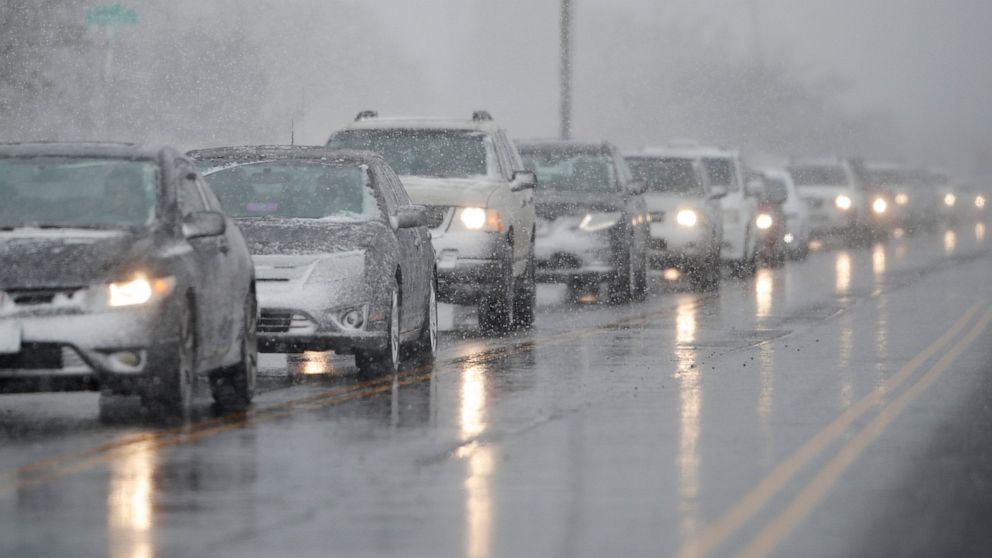
The Latest on severe weather impacting the central U.S. (all times local):
10:45 a.m.
A blizzard has knocked out electricity to tens of thousands of people in the Northern Plains as a powerful storm system sweeps across the central U.S.
According to PowerOutage.us, 14,000 people and businesses are without power in Minnesota and the same number in South Dakota. Another 8,500 are in the dark in Iowa.
Minneapolis-based Xcel Energy spokesman Matt Lindstrom says the main culprit of Thursday’s outages is snow and ice accumulating on power lines, combined with strong winds.
Blizzard conditions in the region are expected to linger into early Friday. Lindstrom says crews are out working to restore power, and they’re used to dealing with bad weather conditions.
The blizzard is part of a storm system known as a “bomb cyclone” that’s slowly churning through the central U.S. for the second time in a month.
———
6:45 a.m.
A powerful spring snow storm sweeping across the Midwest has made travel hazardous across Minnesota, Nebraska and South Dakota.
As much as 18 inches of snow has fallen in parts of South Dakota, where Gov. Kristi Noem closed state offices in much of the state Thursday amid heavy snow and strong winds.
Whiteout conditions have been reported in western Nebraska, where the Department of Transportation reported several highway closures Thursday morning.
Schools in Minneapolis and St. Paul are among hundreds of closed schools in Minnesota, where as much as 2 feet (0.61 meters) of snow is expected in the southwest part of the state by Friday. The Minnesota State Patrol says it has responded to more 200 crashes statewide since Wednesday.
The blizzard is part of a storm system known as a “bomb cyclone” that’s slowly churning through the central U.S. for the second time in a month.
———
12 a.m.
A storm system known as a “bomb cyclone” churned through the U.S. interior for the second time in a month, unleashing a blizzard that struck the Upper Midwest and creating hazardous fire conditions farther south.
The storm knocked out power Wednesday to thousands of homes and businesses in South Dakota, disrupted air and ground travel from Colorado to Minnesota and threatened to swell rivers in the Midwest that flooded after March’s drenching.
National Weather Service Forecaster David Roth said both storms are what is known as a “bomb cyclone,” a weather phenomenon that entails a rapid drop in air pressure and a storm strengthening explosively.
Forecasters said this week’s storm will swell rivers again, though likely not to the levels seen last month.





